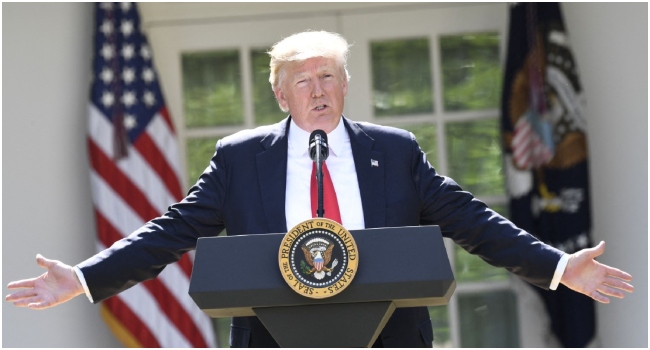
President Donald Trump is set to enforce tariffs on the United States’ three largest trading partners—Canada, Mexico, and China—starting Saturday, February 1, a move that has sparked concerns over potential economic fallout and global trade tensions.
The White House confirmed that Trump will proceed with a 25% tariff on Canadian and Mexican imports unless both countries take stronger action to curb illegal migration into the U.S. and halt the flow of fentanyl. Additionally, a 10% tariff on Chinese goods is scheduled to take effect the same day, also in response to fentanyl concerns.
“The February 1st deadline that President Trump announced weeks ago remains in place,” White House spokeswoman Karoline Leavitt told reporters on Friday, emphasizing that the administration’s primary focus is stopping the influx of illegal fentanyl.
While Trump has not disclosed the specific mechanisms he plans to use for enforcement, analysts suggest he may invoke emergency economic powers, allowing the president to regulate imports during a national crisis. However, legal challenges could complicate such a move.
Fentanyl, a synthetic opioid many times stronger than heroin, has been linked to tens of thousands of overdose deaths annually in the U.S. While Washington has accused Beijing of being complicit in the illicit drug trade, China has repeatedly denied responsibility. Canada has also pushed back, arguing that fewer than 1% of undocumented migrants and fentanyl entering the U.S. come through its northern border.
Economic Impact and Recession Risks
Financial experts warn that the tariff hikes could destabilize North American trade. JPMorgan analysts view the move as a negotiating tactic aimed at revising the United States-Mexico-Canada Agreement (USMCA), but caution that dismantling long-standing trade relationships could have severe economic consequences.
“Canada and Mexico stand to lose 3.6% and 2% of real GDP, respectively, while the U.S. would suffer a 0.3% real GDP decline,” said Wendong Zhang, an assistant professor at Cornell University.
Oxford Economics analysts have also cautioned that sweeping tariffs could push Canada and Mexico into recessions, while the U.S. risks a shallow economic downturn. The impact would be particularly severe on Mexico’s top export sectors—food and beverages, transport equipment, and electronics—which form the backbone of its manufacturing industry.
Canada, which exports nearly 80% of its goods to the U.S., could see major disruptions, especially in its oil industry. The Congressional Research Service (CRS) reports that Canada supplies nearly 60% of U.S. crude oil imports. Any tariffs on oil could drive up gasoline prices, further straining both economies.
Canada and Mexico Brace for Retaliation
In response, Canadian officials have pledged to provide financial support to businesses and workers if the tariffs take effect. Meanwhile, Mexican President Claudia Sheinbaum stated that her government is in close communication with Trump’s administration.
The Trump administration is also considering further tariffs on Chinese imports, with Trump previously suggesting duties as high as 60%. Beijing has vowed to defend its economic interests, warning that “there are no winners in a trade war.”
Financial services expert Isaac Boltansky of BTIG expects “incremental tariff increases” on Chinese goods, particularly targeting non-essential consumer products.
“Our sense is that Trump will oscillate between economic pressure and negotiation with China, ultimately aiming for a ‘grand bargain’ before the end of his term,” Boltansky said.
As the February 1 deadline approaches, trade partners and analysts alike remain on edge, with the potential for economic instability looming over global markets.








